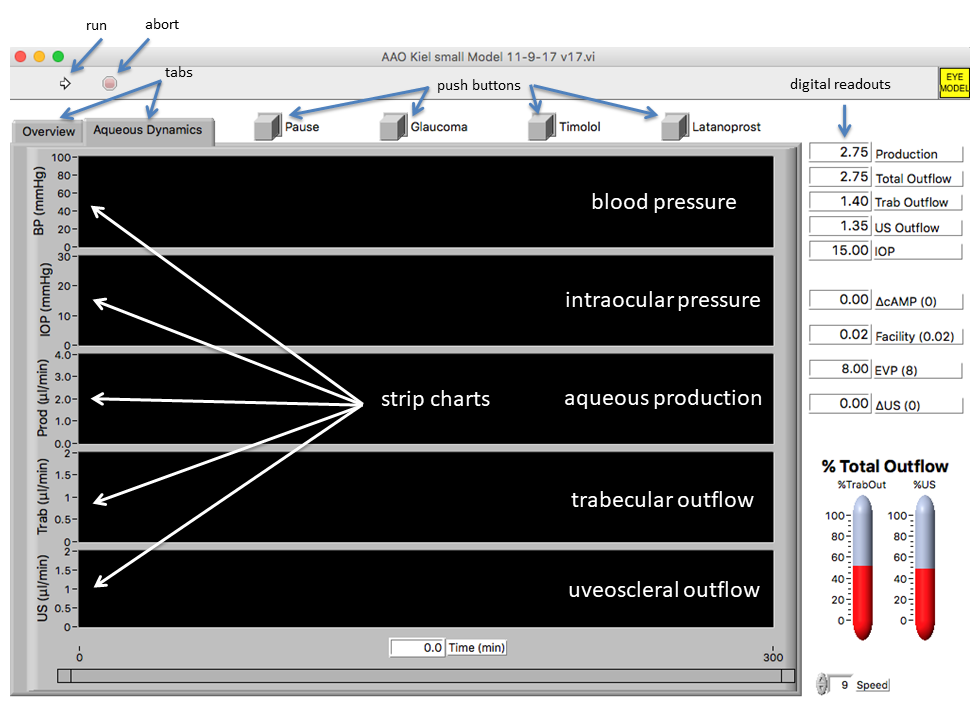NOV 08, 2017
By Jeffrey Kiel, PhD; Carol Toris, PhD
The IOP and Glaucoma Drug Teaching Model, by Drs. Jeffrey Kiel and Carol Toris, displays the changes in aqueous dynamics that occur in primary open-angle glaucoma. Watch how the IOP behaves over time, and introduce timolol and/or latanaprost to see how these drugs affect aqueous dynamics and lower IOP. The model is designed to demonstrate fundamental properties of IOP, especially to students learning about the basic science of glaucoma and real-world applications of glaucoma management.

Instructions for Installation
- The IOP and Glaucoma Drug Model is a software application that requires download and installation.
- The current release is compatible with Mac OSX 10.6 and higher. A Windows-compatible version is in development.
- Administrative rights are required to install the software. Please refer to your particular operating system instructions should you have difficulty installing.
Intraocular Pressure Physiology: A Background
Two conceptual models have historically served as the framework for understanding IOP physiology. The older model views IOP in terms of the ocular pressure-volume relationship, which is an exponential function of the total volume of the ocular contents and the elastic properties of the ocular coats. This approach provides the theoretical basis for indentation tonometry (Friedenwald, 1937) and tonography (Grant, 1950).
The more recent model considers the steady-state IOP in hydraulic terms as an Ohmic function of aqueous flow and outflow resistance (Bárány, 1963). This approach provides a theoretical basis for understanding ocular hypertension and hypotony as well as the current medical and surgical manipulations of IOP.
Each model is useful for understanding different aspects of the IOP, and both are the basis of the computer model offered by the Academy.